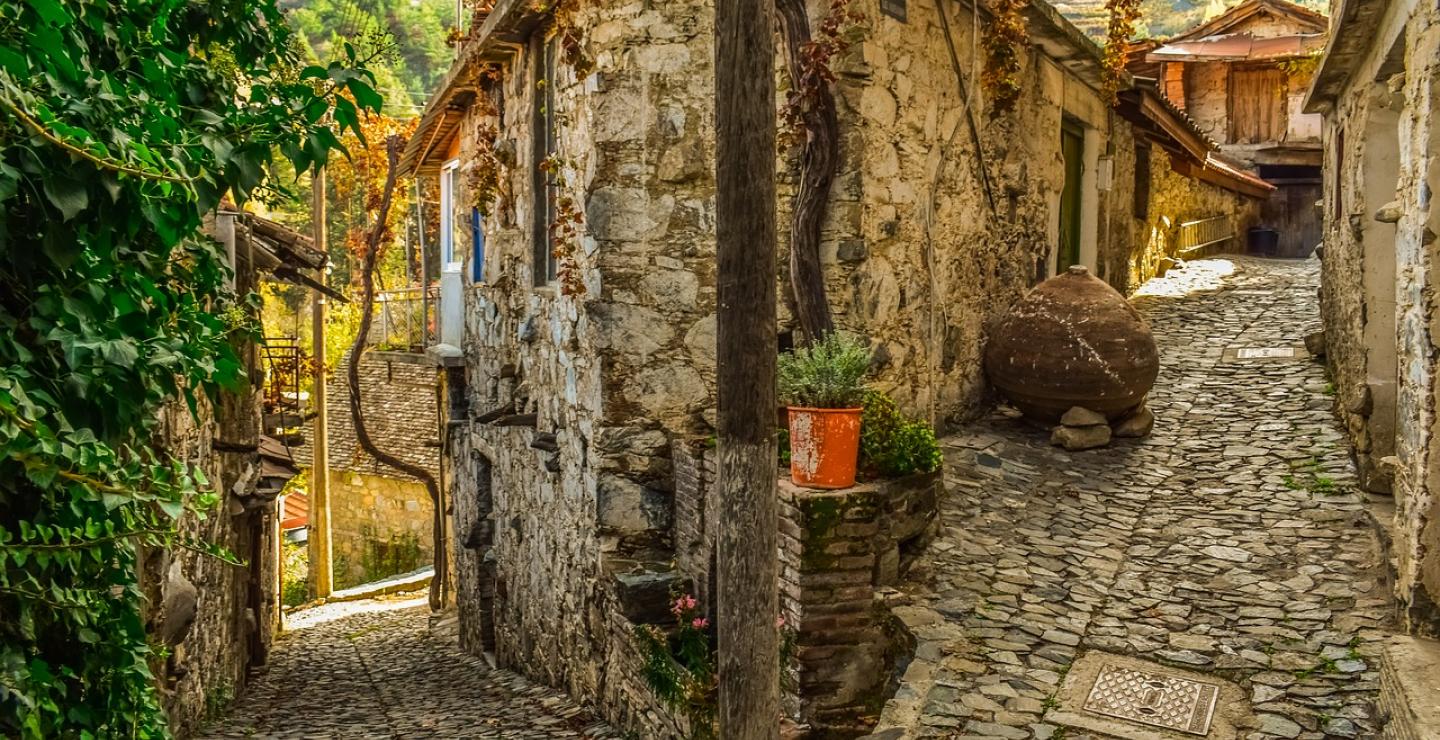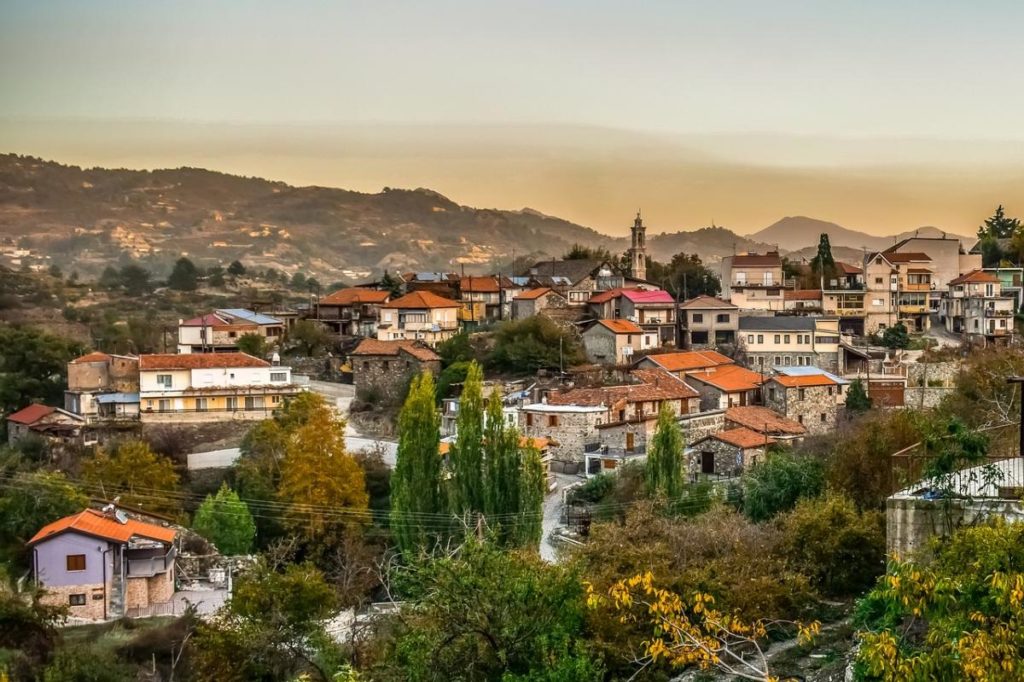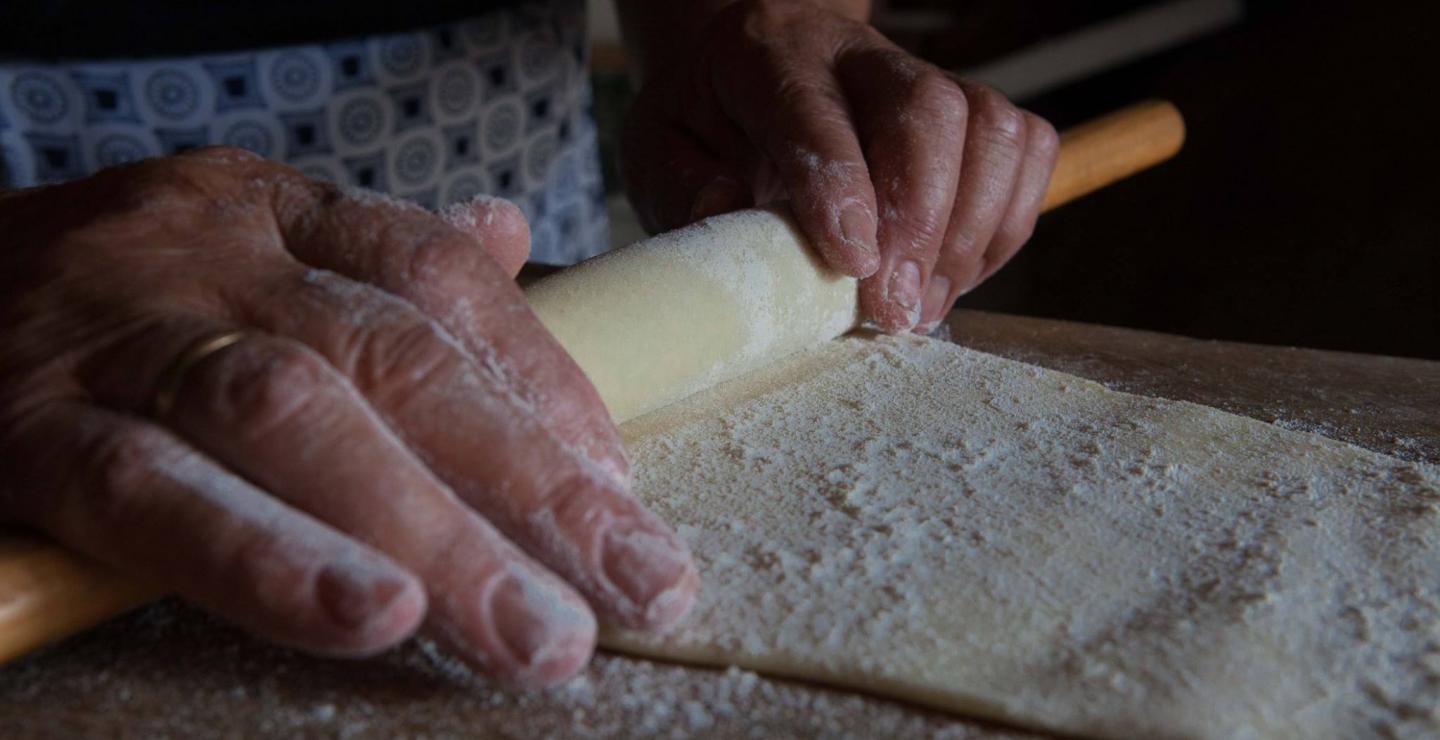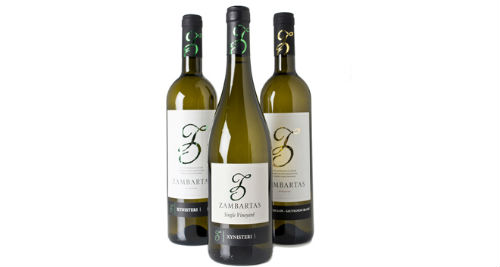Easter in the village

During the days leading up to Easter in Cyprus, aside from enjoying all the delicious treats available at the bakeries, you could be looking to reflect and visit the beautiful churches – decorated with Spring flowers – in the island’s villages depicting iconography from the life of Christ.
The atmosphere in the towns is lively as many believers make preparations to celebrate the holiday by cooking various dishes, dying eggs, and decorating the Epitafios, the tomb of Christ taken out for a procession on Holy Friday.

In the village of Omodos just outside Limassol, which is known for its wine production, you can visit the Monastery of Timios Stavros (the Holy Cross).
The monastery, at the heart of the village, was built by people from the surrounding village Pano and Kato Koupetra.
Legend says that in the night, the villagers saw a fire burning in the area the monastery was built. Upon going to inspect the area, the townspeople did not see any sign of a fire. The light of the fire, however continued to burn for a number of nights.
During their inspections, the villagers are said to have dug and discovered a cave, in which they found a cross. Saint Helen later visited Cyprus and the monastery that was located there, and is said to have left a piece of the rope used to tie Jesus to the cross, and piece of the cross used to crucify him.
Heading to the town of Vouni, you can visit the Byzantine Museum in the town, which displays icons and other church artefacts. The town is also known for the fountains, known as havouzes. There is a Venetian and an Ottoman style fountain the town.
The church of Ayia Mavri in Koilani is a small church with a unique style, and frescoes. The legend says that the saint was a woman in the village, who wished to marry her beloved Timotheos. Her parents, however, wished her to marry another.
In her desperation, Ayia Mavri is said to have thrown herself in an oven to burn, but nothing happened to her, and only her face was blackened from the smoke. Leaving her home, she found Timotheos, and the two were chased by the villagers. The legend says that their road to escape was blocked by a bolder, which the saint hit in her desperation. The bolder then split in two and the lovers passed through, and water sprang from the rock.
There is also the monastery of Christ in the village, which has a number of relics on display.
In the town of Lofou, you can visit the church of the Annunciation. The church has a special area, where icons and relics from the 19th century are housed.

Heading to Palaichori, you can stop by the Museum of Byzantine Heritage, which houses icons, church relics, and other items from the time of the Lusignan Empire in Cyprus. The items were taken from the five churches of the village (Transfiguration of Christ, Panayia Chrysopantanassas, Ayios Georgios, Ayios Loukas, and Ayioi Anargyri).
In Agros, you can visit the church of Ayios Ioannis, which will be decorated for Easter.




